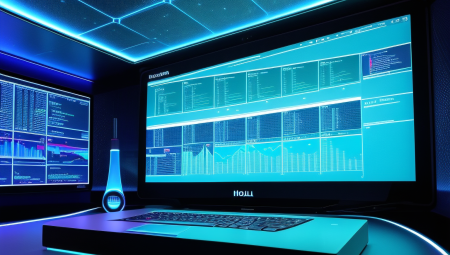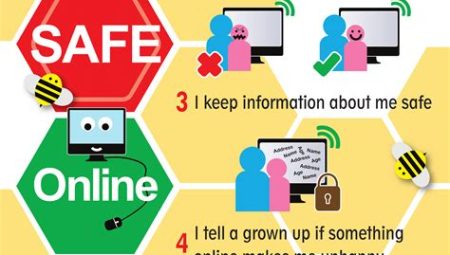In today’s fast-paced, digital world, the way we educate the next generation is evolving. With the rise of technology and the prevalence of gaming, educators are finding new and innovative ways to engage students in the learning process. This blog post will explore the impact of gaming on education and how it is revolutionizing the way we teach and learn.
From engaging the digital native generation to fostering creativity and imagination in virtual worlds, games are offering a unique and interactive learning experience for students. By blending fun and learning in the classroom, educators are finding that students are more engaged and eager to participate in lessons. Additionally, games are enabling personalized learning journeys through adaptive gaming and are boosting motivation and persistence in education.
Join us as we delve into the world of game-based education and discover how it is preparing students for a digital future. Let’s explore the ways in which games are enhancing critical thinking skills, collaboration, communication abilities, and problem-solving, ultimately revolutionizing education as we know it.
Table of Contents
Engaging the Digital Native Generation
In today’s fast-paced digital world, the educational landscape is constantly evolving to meet the needs of the digital native generation. This generation, typically born between the mid-1980s and the early 2000s, has grown up surrounded by technology and is accustomed to the instant access to information and interactive experiences that it provides. As educators, it’s crucial to understand how to engage these individuals in a way that aligns with their digital mindset.
One way to engage the digital native generation is through the integration of technology into the classroom. By incorporating interactive learning experiences through gamification, students can actively participate in their learning process. Gamification involves applying game design elements and principles to non-game contexts, such as education, in order to make learning more engaging and enjoyable. This approach not only captures the attention of students but also provides them with immediate feedback and rewards, which are essential for maintaining their interest.
Another effective method for engaging the digital native generation is through personalized learning journeys with adaptive gaming. With the use of adaptive gaming platforms, educators can tailor learning experiences to students’ individual needs and abilities. This personalized approach ensures that students are receiving the support and challenges that are appropriate for their skill level, keeping them motivated and engaged.
Furthermore, in order to engage the digital native generation, educators should leverage collaboration and communication tools that align with students’ preferences for digital interaction. Virtual collaboration platforms and communication tools allow students to work together on projects, share ideas, and engage in discussions in a way that is familiar and comfortable to them.
Blending Fun and Learning in the Classroom
Integrating fun and learning in the classroom is essential for engaging students and promoting a positive learning environment. When fun is incorporated into the educational experience, students are more likely to be motivated and enthusiastic about their studies. However, it’s important to strike a balance between fun and learning to ensure that educational objectives are still being met.
One way to blend fun and learning is through the use of educational games and activities. These can range from traditional board games to digital games that are specifically designed for educational purposes. By incorporating game-based learning into the curriculum, students can develop important skills such as critical thinking, problem solving, and collaboration, while having fun at the same time.
Another approach to blending fun and learning is through hands-on, interactive experiences. This can involve conducting experiments, going on field trips, or participating in group projects. These types of activities not only make learning more enjoyable for students, but also help them apply what they’ve learned in a real-world context.
Overall, blending fun and learning in the classroom can lead to a more engaging and effective educational experience for students. By incorporating educational games, interactive experiences, and hands-on activities, educators can create a dynamic and stimulating learning environment that promotes both academic achievement and personal development.
Interactive Learning Experiences through Gamification
Gamification in education is an innovative approach that blends the essence of gaming with traditional learning methods. By incorporating game-like elements such as points, leaderboards, and rewards into the educational process, students are engaged in a more interactive and immersive learning experience. These gamified learning experiences create a sense of challenge and competition, motivating students to actively participate and strive for improvement.
Through the use of gamification, students develop critical thinking, problem-solving, and decision-making skills. By working towards achieving specific objectives and overcoming obstacles within the game-based framework, learners are empowered to think critically and strategically. This approach fosters a deeper level of engagement and interactive learning experiences that are both enjoyable and educational.
Furthermore, gamification promotes collaboration and communication among students. By incorporating teamwork and social interaction elements into the game dynamics, learners are encouraged to work together, exchange ideas, and support each other’s progress. This not only enhances their interpersonal skills but also creates a supportive and cooperative learning environment.
In conclusion, the integration of gamification in education offers a dynamic and interactive approach to learning. By leveraging game-like elements to engage and motivate students, educators can create more meaningful and impactful learning experiences. Through gamified learning, students are not only acquiring knowledge but also developing essential skills that will benefit them in their academic and personal growth.
Developing Critical Thinking Skills through Problem Solving
When it comes to preparing students for success in the modern world, developing critical thinking skills through problem solving is of utmost importance. In today’s rapidly changing and complex society, individuals need to be able to analyze, evaluate, and come up with innovative solutions to various challenges they may encounter.
By introducing problem-solving activities in the classroom, educators can provide students with the opportunity to think critically and creatively. Whether it’s solving math problems, working through science experiments, or tackling real-world issues, problem-solving tasks require students to apply logical reasoning and analytical thinking.
Furthermore, engaging in problem-solving activities can also help students develop perseverance and resilience. As they encounter obstacles and setbacks, they learn to adapt and persist in finding solutions, which are essential skills for success in both academics and future careers.
In conclusion, integrating problem solving into the curriculum is an effective way to foster critical thinking skills in students. By providing them with opportunities to analyze, evaluate, and solve problems, educators can help prepare the next generation to navigate the complexities of the digital age with confidence and competence.
Enhancing Collaboration and Communication Abilities
In today’s digital era, the ability to effectively collaborate and communicate with others is an essential skill for success in both the academic and professional world. With the rapid advancement of technology, it has become increasingly important for educators to find innovative ways to enhance these abilities in their students. By integrating interactive learning experiences through gamification, educators can create a dynamic and engaging environment that fosters collaboration and effective communication.
One of the key benefits of gamification is that it encourages teamwork and cooperation. Through multiplayer games and group challenges, students are required to work together to achieve a common goal. This not only teaches them how to collaborate with others, but also how to communicate effectively in order to strategize and solve problems as a team.
Furthermore, gamification provides students with immediate feedback, which is crucial for improving communication skills. As they work towards completing tasks and challenges, they receive real-time feedback on their performance, allowing them to adjust their approach and communicate more effectively with their peers.
By leveraging the power of gamification in education, educators can create an environment that not only enhances collaboration and communication abilities, but also boosts student engagement and motivation, ultimately preparing them for success in a digital future.
Fostering Creativity and Imagination in Virtual Worlds
In today’s digital age, virtual worlds have become an integral part of education, offering students a unique and immersive platform to foster their creativity and imagination. Virtual worlds provide an interactive and dynamic environment that allows students to explore, experiment, and create in ways that are not possible in traditional classrooms.
By engaging with virtual worlds, students can unleash their creativity through building and designing their own virtual spaces, experimenting with different tools and technologies, and collaborating with peers to bring their ideas to life. This hands-on and immersive approach to learning fosters a sense of ownership and empowerment, as students are able to take control of their learning experiences and express themselves in new and exciting ways.
Furthermore, virtual worlds offer endless possibilities for students to use their imagination, whether it’s by creating fantastical landscapes, inventing innovative solutions to real-world problems, or role-playing different scenarios. This open-ended and exploratory nature of virtual worlds encourages students to think outside the box and develop their imaginative skills, ultimately preparing them to become innovative and resourceful problem solvers in the future.
Overall, integrating virtual worlds into education provides a powerful platform for fostering creativity and imagination in students, empowering them to think creatively, explore new possibilities, and develop the skills they need to thrive in the digital age.
Personalized Learning Journey with Adaptive Gaming
As education continues to evolve in the digital age, the concept of personalized learning has gained significant attention. One innovative approach to personalized learning is through adaptive gaming, which tailors the learning experience to the individual needs and abilities of each student. By integrating adaptive gaming into the educational setting, students can embark on a personalized learning journey that is both engaging and effective.
Adaptive gaming allows for a customized learning experience by adjusting the difficulty level and content based on the student’s performance and progress. This ensures that each student is challenged at an appropriate level and can experience success at their own pace. Through this personalized approach, students are empowered to take control of their learning and develop a strong sense of ownership over their educational journey.
Furthermore, adaptive gaming provides educators with valuable insights into each student’s strengths and areas for growth. By analyzing the data generated from adaptive gaming platforms, teachers can gain a deeper understanding of their students’ learning styles, preferences, and areas of difficulty. This enables them to tailor their instruction to better meet the diverse needs of their students, ultimately fostering a more inclusive and effective learning environment.
Ultimately, personalized learning through adaptive gaming offers a unique opportunity for students to embark on a tailored educational journey that is both engaging and effective. By harnessing the power of adaptive gaming, educators can create a learning environment that is responsive to the individual needs and abilities of each student, nurturing their academic growth and unlocking their full potential.
Boosting Motivation and Persistence in Education
Boosting motivation and persistence in education is crucial for ensuring that students stay engaged and committed to their learning journey. It’s important to provide innovative and creative learning experiences that captivate students’ interest and motivate them to overcome challenges.
One effective strategy for boosting motivation and persistence is to incorporate gamification into the learning process. By introducing game elements such as points, levels, and rewards, students are incentivized to actively participate in their education and strive for achievement.
Furthermore, fostering a collaborative and supportive learning environment can also contribute to boosting motivation and persistence. When students feel like they are part of a community where their efforts are valued, they are more likely to stay motivated and persist through difficult tasks.
By implementing these strategies and emphasizing the importance of perseverance and dedication, educators can effectively boost motivation and persistence in education, ultimately leading to greater student success.
Leveraging Game-Based Assessment for Proficiency Evaluation
Game-based assessment is an innovative approach to evaluating students’ proficiency in various subjects. By incorporating games into the assessment process, educators can create a more engaging and interactive learning environment that encourages students to demonstrate their knowledge and skills in a fun and enjoyable way.
One of the key benefits of game-based assessment is that it provides a more holistic view of students’ abilities. Instead of relying solely on traditional tests and exams, game-based assessment allows educators to observe students’ problem-solving, critical thinking, and decision-making skills in real time, providing a more comprehensive understanding of their proficiency in a particular subject.
Moreover, game-based assessment can help to identify students’ strengths and weaknesses more effectively. Through the use of interactive games, educators can gather valuable data on students’ learning styles, preferences, and areas for improvement, which can inform personalized learning plans and interventions to support their academic growth.
By leveraging game-based assessment for proficiency evaluation, educators can create a more dynamic and engaging learning experience that motivates students to actively participate in the assessment process and demonstrate their abilities in a way that traditional assessments may not capture.
Preparing Students for a Digital Future
As we move further into the 21st century, the need to prepare students for a digital future becomes increasingly important. The rapid advancement of technology has transformed the way we live, work, and learn, and it’s essential that our education system adapts to these changes.
With the digital revolution in full swing, it’s crucial for educators to equip students with the necessary skills to thrive in an increasingly tech-oriented society. This means not just teaching them how to use digital tools, but also fostering a deep understanding of how technology works and how to navigate the digital landscape responsibly.
By integrating technology into the educational experience, students can develop a competitive edge in the job market and become innovators in their fields. As the demand for digital literacy continues to grow, it’s clear that preparing students for a digital future is no longer optional—it’s a necessity.
With the right educational strategies and resources, we can ensure that students are well-equipped to thrive in a world that is increasingly driven by digital innovation.




